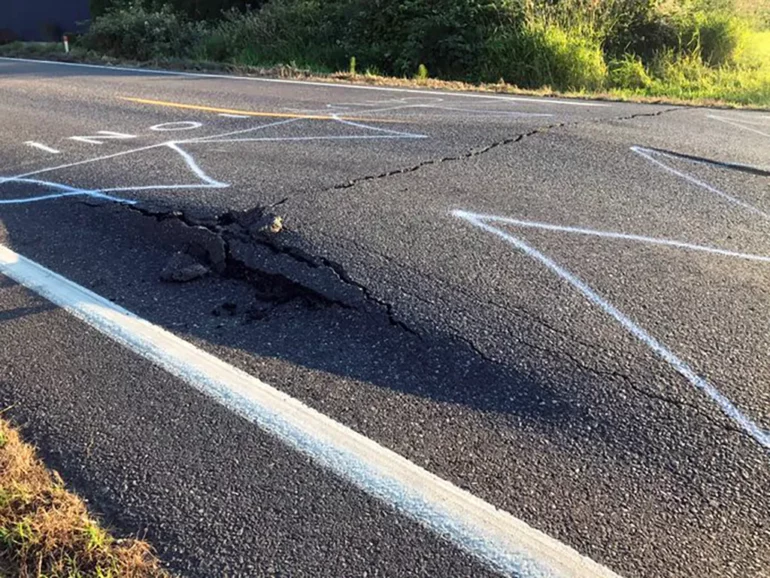Summer 2024’s record heat is creating problems for transportation infrastructure, from roads to rails.
New York’s Third Avenue Bridge, which swings open for ship traffic on the Harlem River, was stuck for hours after its metal expanded in the heat and it couldn’t close. Roads have buckled on hot days in several states, including Washington and Wisconsin. Amtrak warned passengers to prepare for heat-related problems hours before a daylong outage between New York and New Jersey; the risks to power lines and rails during high temperatures are a growing source of delays for the train system.
It doesn’t help that the worsening heat is hitting a U.S. infrastructure system that’s already in trouble.
The American Society of Civil Engineers gave U.S. infrastructure an overall grade of C- in its latest national Infrastructure Report Card, released in 2021. While there has been some improvement – about 7.5% of U.S. bridges were in poor condition, compared with over 12% a decade earlier – many bridges are aging, making them difficult to maintain. Forty percent of the road system was considered in poor or mediocre condition, and maintenance costs have substantially increased.
Firefighters try to cool down New York City’s Third Avenue Bridge after its metal expanded in the heat and the bridge couldn’t close. Even relatively young bridges – this one was partially rebuilt in 2004 – can struggle in high heat.
The rate at which a bridge or road deteriorates depends not only on the materials and construction methods used but also on the climate during the structure’s life span. Extreme heat, in particular, significantly affects transportation infrastructure. As climate change progresses, the frequency and intensity of heat waves are expected to increase, exacerbating these issues.
I lead the Smart Infrastructure and Testing Laboratory at the University of Texas at Arlington, where my team works on ways to better monitor the structural health of infrastructure. Here’s why infrastructure struggles in the heat – and how engineers are innovating to help extend its life.
Buckling highways pose a hazard for drivers
When a road is built, it is cut into segments to create space for the pavement to expand during high heat or to contract in the cold. Without that space, the pavement can buckle when the road material heats up. Buckling of concrete pavement has become a serious problem in several states.
Pavement becomes vulnerable to buckling for a number of reasons. The roadway’s design, the materials it is made out of, the climate when it was built and the weather during its lifetime can affect its life span, as can damage to the road and improper repairs.
Extreme temperatures and heavy precipitation can cause significant damage to roadways and jeopardize the structural integrity of rail systems. Additionally, sea-level rise is accelerating coastal erosion…



